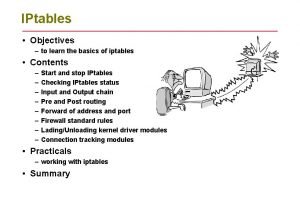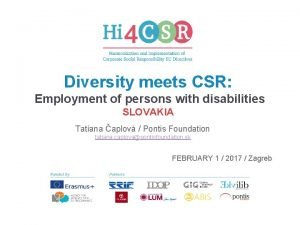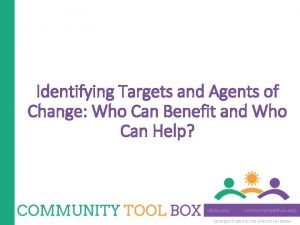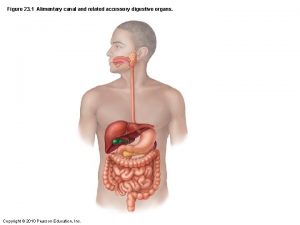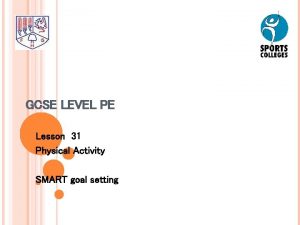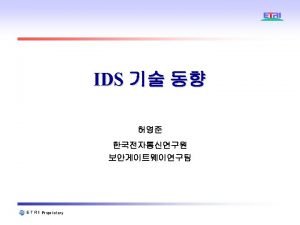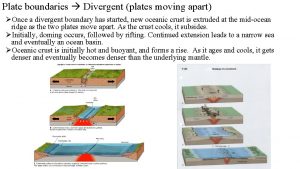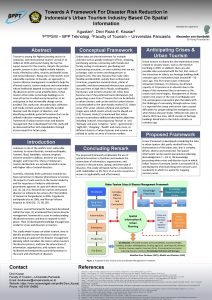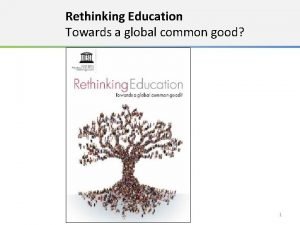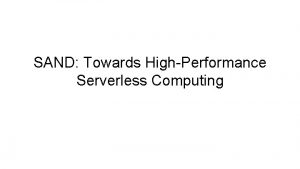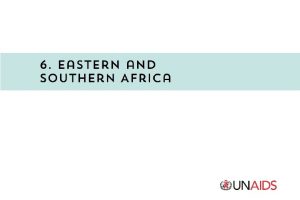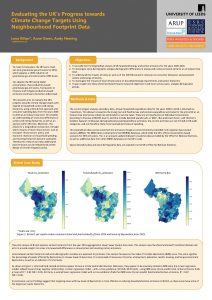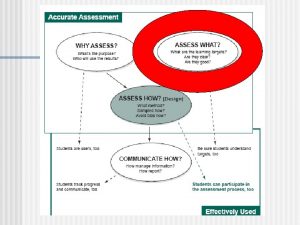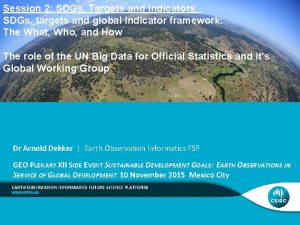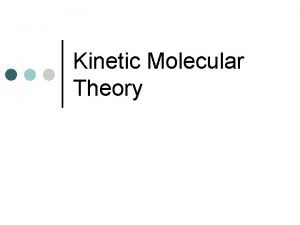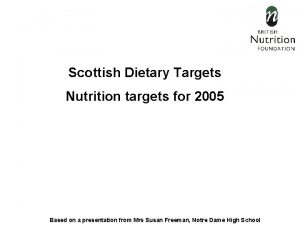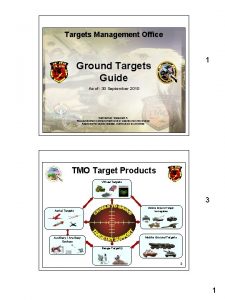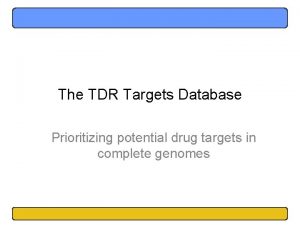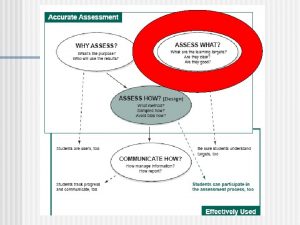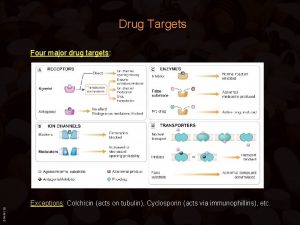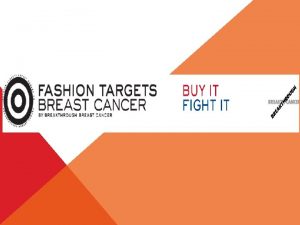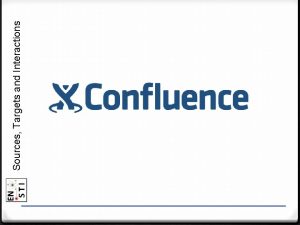PROGRESS TOWARDS THE 90 90 TARGETS Progress towards
















































































- Slides: 80


PROGRESS TOWARDS THE 90– 90 TARGETS Progress towards the 90– 90 treatment target, eastern and southern Africa, 2016 Source: UNAIDS special analysis, 2017; see annex on methods for more details

ADOPTING A TREAT ALL APPROACH Recommended antiretroviral therapy initiation threshold among people living with HIV per Ministry of Health guidelines, by country, eastern and southern Africa, 2016 Twenty of 21 countries in eastern and southern Africa have adopted the World Health Organization recommendation that antiretroviral therapy should be initiated in every person living with HIV at any CD 4 cell count. Eleven countries are already implementing their treat all policies nationally. Source: World Health Organization, 2017.

AIDS-RELATED DEATHS NEARLY CUT IN HALF IN SIX YEARS Antiretroviral therapy coverage and number of AIDS-related deaths, eastern and southern Africa, 2000– 2016 Antiretroviral therapy scale-up has been largely responsible for a steep decline in AIDS-related mortality in eastern and southern Africa: the estimated 420 000 [350 000– 510 000] AIDS-related deaths in 2016 were 42% fewer than in 2010. The drop in deaths due to AIDS-related illnesses has been even greater among children (aged 0– 14 years), declining from an estimated 130 000 [99 000– 150 000] in 2010 to 58 000 [41 000– 80 000] in 2016. AIDS-related illness remains a leading cause of death in the region, however, especially among young women and girls aged 15– 24 years (1). Source: 2017 Global AIDS Monitoring. UNAIDS 2017 estimates.

HIV TESTING AND TREATMENT CASCADE IN EASTERN AND SOUTHERN AFRICA Knowledge of HIV status, antiretroviral therapy coverage and viral suppression among people living with HIV, eastern and southern Africa, 2016 Source: UNAIDS special analysis, 2017; see annex on methods for more details. 2016 measure derived from data reported by 17 countries, which accounted for 99% of people living with HIV in western and central Africa. 2016 measure derived from data reported by 11 countries. Regionally, 37% of all people on antiretroviral therapy were reported to have received a viral load test during the reporting period. 1 2

GAINS ACROSS THE TREATMENT CASCADE Knowledge of HIV status, antiretroviral therapy coverage and viral suppression among people living with HIV, eastern and southern Africa, 2015 and 2016 Source: UNAIDS special analysis, 2017; see annex on methods for more details.

HIV INFECTIONS IN WORLD’S MOST AFFECTED REGION DECLINED BY NEARLY A THIRD (first of 2 slides) Number of new HIV infections, adults (aged 15 years and older), eastern and southern Africa, 2000– 2016 Source: UNAIDS 2017 estimates. Number of new HIV infections, children (aged 0– 14 years), eastern and southern Africa, 2000– 2016 Source: UNAIDS 2017 estimates.

HIV INFECTIONS IN WORLD’S MOST AFFECTED REGION DECLINED BY NEARLY A THIRD (last of 2 slides) Distribution of new HIV infections, by country, eastern and southern Africa, 2016 Percent change in new HIV infections, by country, eastern and southern Africa, from 2010 to 20166 Source: UNAIDS 2017 estimates.

RESOURCE AVAILABILITY IS NEAR FAST-TRACK LEVELS HIV resource availability by source, 2006– 2016, and projected resource needs by 2020, eastern and southern Africa* Source: UNAIDS estimates on HIV resource availability, June 2017. Fast-Track update on investments needed in the AIDS response, 2016– 2030. Geneva: UNAIDS; 2016. Financing the response to low- and middle-income countries: international assistance from donor governments in 2016. The Henry J. Kaiser Family Foundation and UNAIDS (in press). GAM/GARPR reports (2005– 2017). Philanthropic support to address HIV/AIDS in 2015. Washington, DC: Funders Concerned about AIDS; 2016. *Estimates for low- and middle-income countries per 2015 World Bank income level classification. All figures are expressed in constant 2016 US dollars.

90– 90 COUNTRY SCORECARDS Eastern and southern Africa Source: UNAIDS special analysis, 2017 Global AIDS Monitoring. UNAIDS 2017 estimates. 2017 National Commitments and Policy Instrument. European Centres for Disease Control and Prevention Continuum of HIV care 2017 progress report. * The complete set of 90– 90 measures and testing and treatment cascade data for countries can be found at aidsinfo. unaids. org. Estimates of people living with HIV that inform progress towards 90– 90 are country-supplied and have not been validated by UNAIDS. 1


PROGRESS TOWARDS THE 90– 90 TARGETS Progress towards the 90– 90 treatment target, western and central Africa, 2016 Source: UNAIDS special analysis, 2017; see annex on methods for more details

ADOPTING A TREAT ALL APPROACH Recommended antiretroviral therapy initiation threshold among people living with HIV per Ministry of Health guidelines, by country, western and central Africa, 2016 Ten of 24 countries in western and central Africa have adopted the World Health Organization recommendation that antiretroviral therapy should be initiated in every person living with HIV at any CD 4 cell count. Source: World Health Organization, 2017.

AIDS-RELATED DEATHS REMAIN HIGH IN REGION Antiretroviral therapy coverage and number of AIDS-related deaths, western and central Africa, 2000– 2016 The comparatively slow expansion of HIV treatment services has held back the reduction of AIDS-related deaths in western and central Africa. The epidemic claimed the lives of an estimated 310 000 [220 000– 400 000] adults and children in 2016, 21% fewer than the estimated 390 000 [300 000– 480 000] who died due to AIDS-related causes in 2010. Source: 2017 Global AIDS Monitoring. UNAIDS 2017 estimates.

HIV TESTING AND TREATMENT CASCADE IN western and central AFRICA Knowledge of HIV status, antiretroviral therapy coverage and viral suppression among people living with HIV, western and central Africa, 2016 Source: UNAIDS special analysis, 2017; see annex on methods for more details. 1 2016 measure derived from data reported by 13 countries, which accounted for 88% of people living with HIV in the region. 2016 measure derived from data reported by 14 countries. Regionally, 13% of all people on antiretroviral therapy were reported to have received a viral load test during the reporting period. 2

GAINS ACROSS THE TREATMENT CASCADE Knowledge of HIV status, antiretroviral therapy coverage and viral suppression among people living with HIV, western and central Africa, 2015 and 2016 Source: UNAIDS special analysis, 2017; see annex on methods for more details. *Insufficient data available for a 2015 estimate.

HIV INFECTIONS AMONG CHILDREN DECLINED BY A THIRD; ADULTS REMAINED STABLE (first of 2 slides) Number of new HIV infections, adults (aged 15 years and older), western and central Africa, 2000– 2016 Number of new HIV infections, children (aged 0– 14 years), western and central Africa, 2000– 2016 Source: UNAIDS 2017 estimates.

HIV INFECTIONS AMONG CHILDREN DECLINED BY A THIRD; ADULTS REMAINED STABLE (last of 2 slides) Distribution of new HIV infections, by country, western and central Africa, 2016 Percent change in new HIV infections, by country, western and central Africa, from 2010 to 20166 Source: UNAIDS 2017 estimates.

SUBSTANTIAL FINANCING GAP IN WESTERN AND CENTRAL AFRICA HIV resource availability by source, 2006– 2016, and projected resource needs by 2020, western and central Africa* Source: UNAIDS estimates on HIV resource availability, June 2017. Fast-Track update on investments needed in the AIDS response, 2016– 2030. Geneva: UNAIDS; 2016. Financing the response to low- and middle-income countries: international assistance from donor governments in 2016. The Henry J. Kaiser Family Foundation and UNAIDS (in press). GAM/GARPR reports (2005– 2017). Philanthropic support to address HIV/AIDS in 2015. Washington, DC: Funders Concerned about AIDS; 2016. *Estimates for low- and middle-income countries per 2015 World Bank income level classification. All figures are expressed in constant 2016 US dollars.

90– 90 COUNTRY SCORECARDS WEstern and central Africa Source: UNAIDS special analysis, 2017 Global AIDS Monitoring. UNAIDS 2017 estimates. 2017 National Commitments and Policy Instrument. * The complete set of 90– 90 measures and testing and treatment cascade data for countries can be found at aidsinfo. unaids. org.


PROGRESS TOWARDS THE 90– 90 TARGETS Progress towards the 90– 90 treatment target, Asia and the Pacific, 2016 Source: UNAIDS special analysis, 2017; see annex on methods for more details

ADOPTING A TREAT ALL APPROACH Recommended antiretroviral therapy initiation threshold among people living with HIV per Ministry of Health guidelines, by country, Asia and the Pacific, 2016 Thirty countries in Asia and the Pacific have adopted the World Health Organization recommendation that antiretroviral therapy should be initiated in every person living with HIV at any CD 4 cell count. Treat all policies are being implemented nationally in 25 countries, including Afghanistan, Australia, Bhutan, Cambodia, China, Cook Islands, Fiji, India, Japan, Kiribati, Lao People’s Democratic Republic, Malaysia, Mongolia, Nauru, Nepal, Niue, Palau, Republic of Korea, Samoa, Solomon Islands, Sri Lanka, Thailand, Tonga, Viet Nam and Vanuatu. Source: World Health Organization, 2017.

ONE-THIRD REDUCTION IN AIDS-RELATED DEATHS Antiretroviral therapy coverage and number of AIDS-related deaths, Asia and the Pacific, 2000– 2016 The wider availability of antiretroviral therapy has led to a nearly one-third reduction in deaths from AIDS-related illnesses in the region, down from an estimated 240 000 [190 000– 300 000] in 2010 to 170 000 [130 000– 220 000] in 2016. AIDS-related deaths fell by an estimated 52% in Myanmar, while AIDS-related deaths in Indonesia increased by 68% and in Pakistan by 319%. Source: 2017 Global AIDS Monitoring. UNAIDS 2017 estimates.

HIV TESTING AND TREATMENT CASCADE IN ASIA AND THE PACIFIC Knowledge of HIV status, antiretroviral therapy coverage and viral suppression among people living with HIV, Asia and the Pacific, 2016 Source: UNAIDS special analysis, 2017; see annex on methods for more details.

GAINS ACROSS THE TREATMENT CASCADE Knowledge of HIV status, antiretroviral therapy coverage and viral suppression among people living with HIV, Asia and the Pacific, 2015 and 2016 Source: UNAIDS special analysis, 2017; see annex on methods for more details.

OVERALL DECLINES IN NEW HIV INFECTIONS HIDES A VARIETY OF COUNTRY TRENDS (first of 2 slides) Number of new HIV infections, adults (aged 15 years and older), Asia and the Pacific, 2000– 2016 Number of new HIV infections, children (aged 0– 14 years), Asia and the Pacific, 2000– 2016 Source: UNAIDS 2017 estimates.

OVERALL DECLINES IN NEW HIV INFECTIONS HIDES A VARIETY OF COUNTRY TRENDS (last of 2 slides) Distribution of new HIV infections, by country, Asia and the Pacific, 2016 Percent change in new HIV infections, by country, Asia and the Pacific, from 2010 to 2016 Source: UNAIDS 2017 estimates.

DOMESTIC RESOURCES FOR HIV HAVE DOUBLED IN A DECADE HIV resource availability by source, 2006– 2016, and projected resource needs by 2020, Asia and the Pacific* Source: UNAIDS estimates on HIV resource availability, June 2017. Fast-Track update on investments needed in the AIDS response, 2016– 2030. Geneva: UNAIDS; 2016. Financing the response to low- and middle-income countries: international assistance from donor governments in 2016. The Henry J. Kaiser Family Foundation and UNAIDS (in press). GAM/GARPR reports (2005– 2017). Philanthropic support to address HIV/AIDS in 2015. Washington, DC: Funders Concerned about AIDS; 2016. Shan D, Sun J, Yakusik A, et al. “Total HIV/AIDS Expenditures in Dehong Prefecture, Yunnan Province in 2010: The First Systematic Evaluation of Both Health and Non-Health Related HIV/AIDS Expenditures in China”. PLo. S ONE 8(6): e 68006. . *Estimates for low- and middle-income countries per 2015 World Bank income level classification. All figures are expressed in constant 2016 US dollars.

90– 90 COUNTRY SCORECARDS Asia and the Pacific Source: UNAIDS special analysis, 2017 Global AIDS Monitoring. UNAIDS 2017 estimates. 2017 National Commitments and Policy Instrument. * The complete set of 90– 90 measures and testing and treatment cascade data for countries can be found at aidsinfo. unaids. org. Estimates of people living with HIV that inform progress towards 90– 90 are country-supplied and have not been validated by UNAIDS. 1


PROGRESS TOWARDS THE 90– 90 TARGETS Progress towards the 90– 90 treatment target, Latin America, 2016 Source: UNAIDS special analysis, 2017; see annex on methods for more details

ADOPTING A TREAT ALL APPROACH Recommended antiretroviral therapy initiation threshold among people living with HIV per Ministry of Health guidelines, by country, Latin America, 2016 Argentina, Bolivia (Plurinational State of), Brazil, Costa Rica, Mexico, Paraguay, Uruguay and Venezuela (Bolivarian Republic of) have adopted the World Health Organization recommendation that antiretroviral therapy should be initiated in every person living with HIV at any CD 4 cell count. Source: World Health Organization, 2017.

AIDS-RELATED DEATHS DECLINING IN LATIN AMERICA DESPITE WORRYING INCREASES IN SOME COUNTRIES Antiretroviral therapy coverage and number of AIDS-related deaths, Latin America, 2000– 2016 Relatively high and rising HIV treatment coverage has played a primary role in reducing AIDS-related mortality by about 12%, from an estimated 43 000 [35 000– 51 000] in 2000 to 36 000 [28 000– 45 000] in 2016. The bulk of the decline was achieved in Peru, Honduras and Colombia, where AIDS-related deaths declined by 62%, 58% and 45%, respectively. AIDS-related death rates were still rising in a number of countries, notably Guatemala and Paraguay. Source: 2017 Global AIDS Monitoring. UNAIDS 2017 estimates.

HIV TESTING AND TREATMENT CASCADE IN LATIN AMERICA Knowledge of HIV status, antiretroviral therapy coverage and viral suppression among people living with HIV, Latin America, 2016 Source: UNAIDS special analysis, 2017; see annex on methods for more details. 2016 measure derived from data reported by 14 countries, which accounted for 87% of people living with HIV in Latin America. 2016 measure derived from data reported by 14 countries. Regionally, 87% of all people on antiretroviral therapy were reported to have received a viral load test during the reporting period. 1 2

GAINS ACROSS THE TREATMENT CASCADE Knowledge of HIV status, antiretroviral therapy coverage and viral suppression among people living with HIV, Latin America, 2015 and 2016 Source: UNAIDS special analysis, 2017; see annex on methods for more details.

STABLE REGIONAL TREND IN NEW INFECTIONS HIDES DIFFERENCES AMONG COUNTRIES (first of 2 slides) Number of new HIV infections, adults (aged 15 years and older), Latin America, 2000– 2016 Number of new HIV infections, children (aged 0– 14 years), Latin America, 2000– 2016 Source: UNAIDS 2017 estimates.

STABLE REGIONAL TREND IN NEW INFECTIONS HIDES DIFFERENCES AMONG COUNTRIES (last of 2 slides) Distribution of new HIV infections, by country, Latin America, 2016 Percent change in new HIV infections, by country, Latin America, from 2010 to 2016 Source: UNAIDS 2017 estimates.

MORE RESOURCES NEEDED TO REACH FAST-TRACK TARGETS HIV resource availability by source, 2006– 2016, and projected resource needs by 2020, Latin America* Source: UNAIDS estimates on HIV resource availability, June 2017. Fast-Track update on investments needed in the AIDS response, 2016– 2030. Geneva: UNAIDS; 2016. Financing the response to low- and middle-income countries: international assistance from donor governments in 2016. The Henry J. Kaiser Family Foundation and UNAIDS (in press). GAM/GARPR reports (2005– 2017). Philanthropic support to address HIV/AIDS in 2015. Washington, DC: Funders Concerned about AIDS; 2016. *Estimates for low- and middle-income countries per 2015 World Bank income level classification. All figures are expressed in constant 2016 US dollars.

90– 90 COUNTRY SCORECARDS LATIN AMERICA Source: UNAIDS special analysis, 2017 Global AIDS Monitoring. UNAIDS 2017 estimates. 2017 National Commitments and Policy Instrument. * The complete set of 90– 90 measures and testing and treatment cascade data for countries can be found at aidsinfo. unaids. org.


PROGRESS TOWARDS THE 90– 90 TARGETS Progress towards the 90– 90 treatment target, CARIBBEAN, 2016 Source: UNAIDS special analysis, 2017; see annex on methods for more details

ADOPTING A TREAT ALL APPROACH Recommended antiretroviral therapy initiation threshold among people living with HIV per Ministry of Health guidelines, by country, CARIBBEAN, 2016 Eight countries in the Caribbean have adopted the World Health Organization recommendation that antiretroviral therapy should be initiated in every person living with HIV at any CD 4 cell count. The majority of the other countries in the region start antiretroviral therapy for individuals who have a CD 4 count of under 500 cells/mm 3. Countries receiving support from the Global Fund to Fight AIDS, Tuberculosis and Malaria (the Global Fund) and the United States President’s Emergency Plan for AIDS Relief (PEPFAR) appear to be shifting more quickly to a treat all approach. Source: World Health Organization, 2017.

AIDS-RELATED DEATHS DROP BELOW 10 000 Antiretroviral therapy coverage and number of AIDS-related deaths, Caribbean, 2000– 2016 The number of people accessing antiretroviral therapy over the last six years has more than doubled, and this has played a primary role in the reduction of AIDS-related deaths from an estimated 21 000 [16 000– 26 000] in 2000 to an estimated 9400 [7300– 12 000] in 2016. Source: 2017 Global AIDS Monitoring. UNAIDS 2017 estimates.

HIV TESTING AND TREATMENT CASCADE IN THE CARIBBEAN Knowledge of HIV status, antiretroviral therapy coverage and viral suppression among people living with HIV, CARIBBEAN, 2016 Source: UNAIDS special analysis, 2017; see annex on methods for more details. 2016 measure derived from data reported by 14 countries, which accounted for 87% of people living with HIV in Latin America. 2016 measure derived from data reported by 14 countries. Regionally, 87% of all people on antiretroviral therapy were reported to have received a viral load test during the reporting period. 1 2

GAINS ACROSS THE TREATMENT CASCADE Knowledge of HIV status, antiretroviral therapy coverage and viral suppression among people living with HIV, Caribbean, 2015 and 2016 Source: UNAIDS special analysis, 2017; see annex on methods for more details.

NEW HIV INFECTIONS RISING IN CUBA, FALLING IN HAITI Number of new HIV infections, adults (aged 15 years and older), Caribbean, 2000– 2016 Number of new HIV infections, children (aged 0– 14 years), Caribbean, 2000– 2016 Source: UNAIDS 2017 estimates. (first of 2 slides)

NEW HIV INFECTIONS RISING IN CUBA, FALLING IN HAITI Distribution of new HIV infections, by country, Caribbean, 2016 Percent change in new HIV infections, by country, Caribbean, from 2010 to 2016 Source: UNAIDS 2017 estimates. (last of 2 slides)

DIMINISHING EXTERNAL FUNDING IN THE CARIBBEAN HIV resource availability by source, 2006– 2016, and projected resource needs by 2020, Caribbean* Source: UNAIDS estimates on HIV resource availability, June 2017. Fast-Track update on investments needed in the AIDS response, 2016– 2030. Geneva: UNAIDS; 2016. Financing the response to low- and middle-income countries: international assistance from donor governments in 2016. The Henry J. Kaiser Family Foundation and UNAIDS (in press). GAM/GARPR reports (2005– 2017). Philanthropic support to address HIV/AIDS in 2015. Washington, DC: Funders Concerned about AIDS; 2016. *Estimates for low- and middle-income countries per 2015 World Bank income level classification. All figures are expressed in constant 2016 US dollars.

90– 90 COUNTRY SCORECARDS CARIBBEAN * The complete set of 90– 90 measures and testing and treatment cascade data for countries can be found at aidsinfo. unaids. org. Source: UNAIDS special analysis, 2017 Global AIDS Monitoring. UNAIDS 2017 estimates. 2017 National Commitments and Policy Instrument. Estimates of people living with HIV that inform progress towards 90– 90 are country-supplied and have not been validated by UNAIDS. 1


PROGRESS TOWARDS THE 90– 90 TARGETS Progress towards the 90– 90 treatment target, Middle East and North Africa, 2016 Source: UNAIDS special analysis, 2017; see annex on methods for more details

ADOPTING A TREAT ALL APPROACH Recommended antiretroviral therapy initiation threshold among people living with HIV per Ministry of Health guidelines, by country, Middle East and North Africa, 2016 Source: World Health Organization, 2017.

AIDS-RELATED DEATHS CONTINUE TO RISE Antiretroviral therapy coverage and number of AIDS-related deaths, Middle East and North Africa, 2000– 2016* The Middle East and North Africa is one of two regions in the world where AIDS-related deaths continue to rise. The annual number of adults and children dying due to AIDS-related illnesses increased from an estimated 3600 [2200– 6400] in 2000 to more than 11 000 [7700– 19 000] in 2016. AIDS-related deaths more than doubled between 2000 and 2010 in Egypt, the Islamic Republic of Iran, Kuwait, Morocco, Sudan, Tunisia and Yemen, which can be explained by increasing incidence in some countries and limited access to treatment in others. In countries where treatment coverage has expanded, AIDS-related deaths have decreased significantly since 2010 (e. g. by 37% in Algeria and 28% in Djibouti). Source: 2017 Global AIDS Monitoring; UNAIDS 2017 estimates. * Estimates for Kuwait are for citizens of the country only.

HIV TESTING AND TREATMENT CASCADE IN THE MIDDLE EAST AND NORTH AFRICA Knowledge of HIV status, antiretroviral therapy coverage and viral suppression among people living with HIV, Middle East and North Africa, 2016 Source: UNAIDS special analysis, 2017; see annex on methods for more details. 2016 measure derived from data reported by six countries, which accounted for 80% of people living with HIV in the region. 2016 measure derived from data reported by six countries. Worldwide, 34% of all people on antiretroviral therapy were reported to have received a viral load test during the reporting period. 1 2

GAINS ACROSS THE TREATMENT CASCADE Knowledge of HIV status, antiretroviral therapy coverage and viral suppression among people living with HIV, Middle East and North Africa, 2015 and 2016 Source: UNAIDS special analysis, 2017; see annex on methods for more details.

NEW INFECTION TRENDS VARY WIDELY IN THE MIDDLE EAST AND NORTH AFRICA (first of 2 slides) Number of new HIV infections, adults (aged 15 years and older), Middle East and North Africa, 2000– 2016 Number of new HIV infections, children (aged 0– 14 years), Middle East and North Africa, 2000– 2016 Source: UNAIDS 2017 estimates.

NEW INFECTION TRENDS VARY WIDELY IN THE MIDDLE EAST AND NORTH AFRICA (last of 2 slides) Distribution of new HIV infections, by country, Middle East and North Africa, 2016 Percent change in new HIV infections, by country, Middle East and North Africa, from 2010 to 20166 Source: UNAIDS 2017 estimates. *Estimates for Bahrain, Kuwait, Jordan and Qatar are for citizens of the country only.

RESOURCE AVAILABILITY IS SHORT OF FAST-TRACK NEEDS HIV resource availability by source, 2006– 2016, and projected resource needs by 2020, Middle East and North Africa* Source: UNAIDS estimates on HIV resource availability, June 2017. Fast-Track update on investments needed in the AIDS response, 2016– 2030. Geneva: UNAIDS; 2016. Financing the response to low- and middle-income countries: international assistance from donor governments in 2016. The Henry J. Kaiser Family Foundation and UNAIDS (in press). GAM/GARPR reports (2005– 2017). Philanthropic support to address HIV/AIDS in 2015. Washington, DC: Funders Concerned about AIDS; 2016. *Estimates for low- and middle-income countries per 2015 World Bank income level classification. All figures are expressed in constant 2016 US dollars.

90– 90 COUNTRY SCORECARDS Middle East and North Africa Source: UNAIDS special analysis, 2017 Global AIDS Monitoring. UNAIDS 2017 estimates. 2017 National Commitments and Policy Instrument. * The complete set of 90– 90 measures and testing and treatment cascade data for countries can be found at aidsinfo. unaids. org. Estimates of people living with HIV that inform progress towards 90– 90 are country-supplied and have not been validated by UNAIDS. 1 Estimates of people living with HIV are only for citizens of the country. 2


PROGRESS TOWARDS THE 90– 90 TARGETS Progress towards the 90– 90 treatment target, eastern Europe and central Asia, 2016 Source: UNAIDS special analysis, 2017; see annex on methods for more details

ADOPTING A TREAT ALL APPROACH Recommended antiretroviral therapy initiation threshold among people living with HIV per Ministry of Health guidelines, by country, eastern Europe and central Asia, 2016 Four countries—Belarus, Georgia, Montenegro and Ukraine—have adopted the World Health Organization recommendation that antiretroviral therapy should be initiated in every person living with HIV at any CD 4 cell count. Source: World Health Organization, 2017.

AIDS-RELATED DEATHS CONTINUE TO INCREASE Antiretroviral therapy coverage and number of AIDS-related deaths, eastern Europe and central Asia, 2000– 2016 Low coverage of HIV testing and treatment programmes and rising numbers of new infections are contributing to an increasing trend in AIDS-related mortality. The annual number of deaths due to AIDS-related causes rose from an estimated 32 000 [27 000– 37 000] in 2010 to 40 000 [32 000– 49 000] in 2016, a 25% increase. The bulk of this increase occurred in the Russian Federation, where the epidemic claimed a reported 30 550 lives in 2016 (1). Source: 2017 Global AIDS Monitoring. UNAIDS 2017 estimates.

HIV TESTING AND TREATMENT CASCADE IN eastern Europe And central Asia Knowledge of HIV status, antiretroviral therapy coverage and viral suppression among people living with HIV, eastern Europe And central Asia, 2016 Source: UNAIDS special analysis, 2017; see annex on methods for more details. 2016 measure derived from data reported by 12 countries, which accounted for 99% of people living with HIV in the region. 2016 measure derived from data reported by 13 countries. In the region, 93% of all people on antiretroviral therapy were reported to have received a viral load test during the reporting period. 1 2

GAINS ACROSS THE TREATMENT CASCADE Knowledge of HIV status, antiretroviral therapy coverage and viral suppression among people living with HIV, Middle East and North Africa, 2015 and 2016 Source: UNAIDS special analysis, 2017; see annex on methods for more details.

HIV INFECTIONS CONTINUE TO CLIMB IN EASTERN EUROPE AND CENTRAL ASIA (first of 2 slides) Number of new HIV infections, adults (aged 15 years and older), eastern Europe and central Asia, 2000– 2016 Source: UNAIDS 2017 estimates

HIV INFECTIONS CONTINUE TO CLIMB IN EASTERN EUROPE AND CENTRAL ASIA (last of 2 slides) Distribution of new HIV infections, by country, eastern Europe and central Asia, 2016 Percent change in new HIV infections, by country, eastern Europe and central Asia, from 2010 to 2016 Source: UNAIDS 2017 estimates

DOMESTIC FUNDING INCREASING, BUT A LARGE RESOURCE GAP REMAINS HIV resource availability by source, 2006– 2016, and projected resource needs by 2020, eastern Europe and central Asi. A* Source: UNAIDS estimates on HIV resource availability, June 2017. Fast-Track update on investments needed in the AIDS response, 2016– 2030. Geneva: UNAIDS; 2016. Financing the response to low- and middle-income countries: international assistance from donor governments in 2016. The Henry J. Kaiser Family Foundation and UNAIDS (in press). GAM/GARPR reports (2005– 2017). Philanthropic support to address HIV/AIDS in 2015. Washington, DC: Funders Concerned about AIDS; 2016. *Estimates for low- and middle-income countries per 2015 World Bank income level classification. All figures are expressed in constant 2016 US dollars.

90– 90 COUNTRY SCORECARDS Eastern Europe and central Asia Source: UNAIDS special analysis, 2017 Global AIDS Monitoring. UNAIDS 2017 estimates. 2017 National Commitments and Policy Instrument. * The complete set of 90– 90 measures and testing and treatment cascade data for countries can be found at aidsinfo. unaids. org. Estimates of people living with HIV that inform progress towards 90– 90 are country-supplied and have not been validated by UNAIDS. 1 Estimates of people living with HIV are only for citizens of the country. 2


PROGRESS TOWARDS THE 90– 90 TARGETS Progress towards the 90– 90 treatment target, western and central Europe and North America, 2016 Source: UNAIDS special analysis, 2017; see annex on methods for more details

ADOPTING A TREAT ALL APPROACH Recommended antiretroviral therapy initiation threshold among people living with HIV per Ministry of Health guidelines, by country, western and central Europe and North America, 2016 Most countries in the region have adopted the World Health Organization recommendation that antiretroviral therapy should be initiated in every person living with HIV regardless of CD 4 cell count. In Latvia and Lithuania, the threshold for antiretroviral therapy initiation is CD 4 T-cell counts of under 350 cells/mm³, and in Belgium it is under 500 cells/mm³. Source: World Health Organization, 2017.

HIGH COVERAGE OF TREATMENT BRINGS AIDS-RELATED MORTALITY UNDER 20 000 A YEAR Antiretroviral therapy coverage and number of AIDS-related deaths, western and central Europe and North America, 2000– 2016 High and rising coverage of antiretroviral therapy has played a primary role in the reduction of AIDS-related deaths from an estimated 43 000 [36 000– 52 000] in 2000 to an estimated 18 000 [15 000– 20 000] in 2016. Source: 2017 Global AIDS Monitoring. UNAIDS 2017 estimates.

HIV TESTING AND TREATMENT CASCADE IN WESTERN AND CENTRAL EUROPE AND NORTH AMERICA Knowledge of HIV status, antiretroviral therapy coverage and viral suppression among people living with HIV, WESTERN AND CENTRAL EUROPE AND NORTH AMERICA, 2016 Source: UNAIDS special analysis, 2017; see annex on methods for more details. 2016 measure derived from data reported by 25 countries, which accounted for 99% of people living with HIV in western and central Europe and North America. 22016 measure derived from data reported by 14 countries. Regionally, 100% of all people on antiretroviral therapy were reported to have received a viral load test during the reporting period. 1 2

HIV TESTING AND TREATMENT CASCADE IN THE EUROPEAN UNION Knowledge of HIV status, antiretroviral therapy coverage and viral suppression among people living with HIV, European Union, 2016 Source: UNAIDS special analysis, 2017; see annex on methods for more details.

DECLINES IN NEW INFECTIONS IN THE REGION TEMPERED BY INCREASES IN CZECHIA, SERBIA AND SLOVAKIA (first of 3 slides) Number of new HIV infections, adults (aged 15 years and older), western and central Europe and North America, 2000– 2016 Source: UNAIDS 2017 estimates

DECLINES IN NEW INFECTIONS IN THE REGION TEMPERED BY INCREASES IN CZECHIA, SERBIA AND SLOVAKIA (second of 3 slides) Distribution of new HIV infections, by country, western and central Europe and North America, 2016 Source: UNAIDS 2017 estimates

DECLINES IN NEW INFECTIONS IN THE REGION TEMPERED BY INCREASES IN CZECHIA, SERBIA AND SLOVAKIA (last of 3 slides) Percent change in new HIV infections, by country, western and central Europe and North America, from 2010 to 2016 Source: UNAIDS 2017 estimates

90– 90 COUNTRY SCORECARDS Eastern Europe and central Asia * The complete set of 90– 90 measures and testing and treatment cascade data for countries can be found at aidsinfo. unaids. org. All measures of progress toward 90– 90 and the testing and treatment cascade are for 2016 except as follows: 2015: Bulgaria, Germany, Hungary, Israel, Netherlands, Sweden, Switzerland, United Kingdom. 2014: Belgium, Canada, Serbia, Spain. 2013: Austria, France, Greece. 2012: Italy. Policy measures are as of 2016. 1 Estimates of people living with HIV that inform progress towards 90– 90 are country-supplied and have not been validated by UNAIDS. 2 Data from European Centres for Disease Control and Prevention Continuum of HIV care 2017 progress report. 3 Source: UNAIDS special analysis, 2017 Global AIDS Monitoring. UNAIDS 2017 estimates. 2017 National Commitments and Policy Instrument. European Centres for Disease Prevention and Control. Continuum of HIV care 2017 progress report. Stockholm: European Centres for Disease Prevention and Control; 2017.
 Physical progress and financial progress
Physical progress and financial progress Iptables command
Iptables command Segment invasion plan
Segment invasion plan Learning target examples math
Learning target examples math Brides magazine targets consumers who are in
Brides magazine targets consumers who are in Europe 2020 targets
Europe 2020 targets Five patterns of target market selection
Five patterns of target market selection Identifying market segments and targets chapter 9
Identifying market segments and targets chapter 9 Warehouse objectives and goals
Warehouse objectives and goals Single segment concentration
Single segment concentration Parathyroid gland chief cell
Parathyroid gland chief cell Learning target
Learning target Learning targets knowledge, reasoning, skill product
Learning targets knowledge, reasoning, skill product Targets of change
Targets of change Smarterbalanced.alohahsap.org
Smarterbalanced.alohahsap.org Physical targets
Physical targets Identifying market segments and targets chapter 9
Identifying market segments and targets chapter 9 Writing learning targets
Writing learning targets Drag the appropriate labels to their respective targets.
Drag the appropriate labels to their respective targets. Identifying market segments and targets chapter 9
Identifying market segments and targets chapter 9 The nfl targets several different market segments
The nfl targets several different market segments Smart target gcse pe
Smart target gcse pe On training targets for supervised speech separation
On training targets for supervised speech separation Icsa idsc 모니터링 접근방식
Icsa idsc 모니터링 접근방식 Druggist fold definition
Druggist fold definition Racial etiquette targets
Racial etiquette targets Tonnie de koster
Tonnie de koster Nyseslat targets of measurement
Nyseslat targets of measurement Early childhood education barbados
Early childhood education barbados Agonist antagonist muscles
Agonist antagonist muscles Thế nào là hệ số cao nhất
Thế nào là hệ số cao nhất Frameset trong html5
Frameset trong html5 Sơ đồ cơ thể người
Sơ đồ cơ thể người Tư thế ngồi viết
Tư thế ngồi viết Bảng số nguyên tố
Bảng số nguyên tố đặc điểm cơ thể của người tối cổ
đặc điểm cơ thể của người tối cổ Mật thư anh em như thể tay chân
Mật thư anh em như thể tay chân Các châu lục và đại dương trên thế giới
Các châu lục và đại dương trên thế giới Tư thế worm breton
Tư thế worm breton ưu thế lai là gì
ưu thế lai là gì Thẻ vin
Thẻ vin Cái miệng nó xinh thế chỉ nói điều hay thôi
Cái miệng nó xinh thế chỉ nói điều hay thôi Các châu lục và đại dương trên thế giới
Các châu lục và đại dương trên thế giới Bổ thể
Bổ thể Từ ngữ thể hiện lòng nhân hậu
Từ ngữ thể hiện lòng nhân hậu Tư thế ngồi viết
Tư thế ngồi viết V cc
V cc Phép trừ bù
Phép trừ bù Thể thơ truyền thống
Thể thơ truyền thống Chúa sống lại
Chúa sống lại Sự nuôi và dạy con của hổ
Sự nuôi và dạy con của hổ đại từ thay thế
đại từ thay thế Diễn thế sinh thái là
Diễn thế sinh thái là Vẽ hình chiếu vuông góc của vật thể sau
Vẽ hình chiếu vuông góc của vật thể sau Công thức tính độ biến thiên đông lượng
Công thức tính độ biến thiên đông lượng Thế nào là mạng điện lắp đặt kiểu nổi
Thế nào là mạng điện lắp đặt kiểu nổi Tỉ lệ cơ thể trẻ em
Tỉ lệ cơ thể trẻ em Lời thề hippocrates
Lời thề hippocrates Vẽ hình chiếu đứng bằng cạnh của vật thể
Vẽ hình chiếu đứng bằng cạnh của vật thể độ dài liên kết
độ dài liên kết Quá trình desamine hóa có thể tạo ra
Quá trình desamine hóa có thể tạo ra Các môn thể thao bắt đầu bằng tiếng đua
Các môn thể thao bắt đầu bằng tiếng đua Hình ảnh bộ gõ cơ thể búng tay
Hình ảnh bộ gõ cơ thể búng tay Sự nuôi và dạy con của hổ
Sự nuôi và dạy con của hổ điện thế nghỉ
điện thế nghỉ Dot
Dot Thế nào là sự mỏi cơ
Thế nào là sự mỏi cơ Trời xanh đây là của chúng ta thể thơ
Trời xanh đây là của chúng ta thể thơ Chó sói
Chó sói Thiếu nhi thế giới liên hoan
Thiếu nhi thế giới liên hoan Fecboak
Fecboak Một số thể thơ truyền thống
Một số thể thơ truyền thống Plates that move towards each other
Plates that move towards each other Towards a framework for tourism disaster management
Towards a framework for tourism disaster management Loyalty and devotion meaning
Loyalty and devotion meaning Rethinking education: towards a global common good?
Rethinking education: towards a global common good? Towards a theory of transcultural fandom
Towards a theory of transcultural fandom Savukku nora money
Savukku nora money Sand: towards high-performance serverless computing
Sand: towards high-performance serverless computing Merchant of venice appearance vs reality
Merchant of venice appearance vs reality Deep forest: towards an alternative to deep neural networks
Deep forest: towards an alternative to deep neural networks

